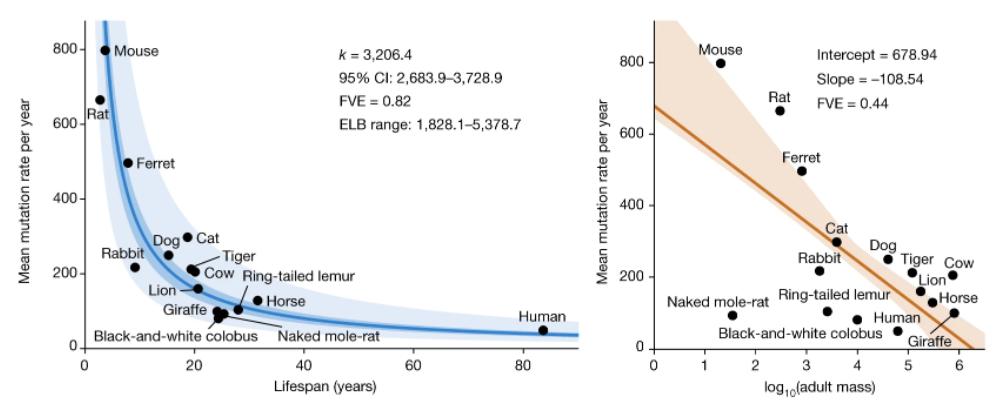Client Lifetime Somatic Mutations
What determines any particular species of animal's lifespan?
From a team of Cambridge scientists, we learn the previous theory - body size as proportional to life expectancy, known as Peto's Paradox - must now evolve.
The new hypothesis being that;
"lifespan is inversely proportional to the somatic mutation rate".
In plain language, this means that the body of an animal ceases to function after a certain accumulation of genetic changes. The more you have each year, the less long your life.
The kinds that range from going on to cause cells to become cancerous, all the way through to other impairments, and even benign DNA alterations.
That amassed volume appears to average out across the animal kingdom at 3,200.
So the number of DNA errors per year of any species is perhaps the real metric.
The examples given shine light on comparisons;
humans :: 47 annual mutations :: average life expectancy of 83½yrs
5-inch long naked mole rats 93 :: 25yrs
giraffes 99 :: 24yrs
mice 797 :: 3¾yrs
Along with many nice trend-line graphic samples too, such as;

Relationships have their own such rate too, don't you think?
What's the length of the typical customer lifetime with you?
What determines this duration?
Could a contributory factor be your annual 'mutation rate' too?
Say, the number of times issues are raised?
Requests left hanging?
Deliveries that go un-made?
Downtime?
Promised workflow smoothing failing to materialise?
Or how about a more inter-personal measure.
Like contact with each of the key buying influences.
Do we even track those touches, whether they be with chief exec or janitor?
A different angle might refer to the pre-sell. How often does the spec get changed? Is that ever an indication of future partnerships strength and so longevity?
Either way, citing this new scientific discovery could well let us have a discussion with the client about what they feel does in fact cement a fruitful, collaborative and full life together.
